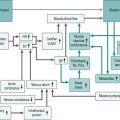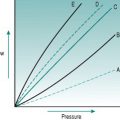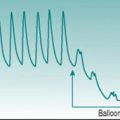Chapter 1 Introduction
the whole-body response to exercise
The amount of skeletal muscle activation that occurs during exercise must by definition be proportional to the activity of descending neural instructions from the cerebral motor cortex. This offers an ideal way by which circulatory responses can be regulated in proportion to the extent of motor activity, via collateral inputs from the descending motor axons onto the hindbrain nuclei that control the sympathetic nervous system. These inputs activate sympathetic outflows to the heart and peripheral blood vessels, increasing cardiac output and blood pressure. At the same time, a combination of local mechanisms in the microcirculation of the active muscles ensures that these vessels are relaxed so that the elevated cardiac and perfusion pressure gradient result in increased muscle blood flow. This situation is summarized, in its simplest form, in Figure 1.1 below.
The next few chapters will be concerned with the mechanisms by which these basic events take place, together with some of the practicalities of measuring them in human subjects. We shall progressively expand upon the flow diagram shown in Figure 1.1, aiming to finish up with a complete diagrammatic description of the interactions that occur during acute exercise. We shall then examine the ways in which circulatory efficiency limits exercise in different circumstances and some of the factors that can curtail exercise by interfering with circulatory function. Finally, we shall look at the ways in which cardiovascular adaptation to chronic exercise improves the efficiency of the acute exercise response, and how this adaptation is affected by exposure to different altitudes.





